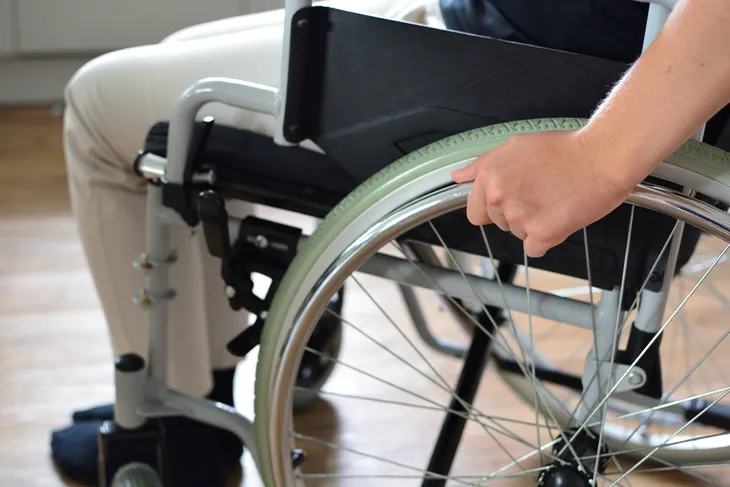Prescribing exercise for chronic disease management not only reduces symptoms of or prevents disease, but results in many positive side effects. From stress reduction and the support of immune system health to reduction of blood pressure and cholesterol, when used moderately, exercise can not only support physical health, but positively influence our mental health. There is a growing body of research that not only examines the relationship between exercise and specific health issues, but may also suggests particular exercises that may benefit more than others.
Below is a list of twelve such suggestions that may serve as tools for prevention or treatment. Like anything else, it is important to consult with a medical professional before establishing an exercise program and, if given the green light, a certified personal trainer or kinesiologist for advice on exercise programming…
Exercise for Back Health
For those of us who suffer from chronic back pain we may initially shy away from exercise fearing it may do more harm than good. In fact, habitual exercise can help alleviate muscle stiffness, weakness, and strengthen the muscles that help to support the spine. To avoid further injury to the back, it is important to pay specific attention to the exercise performed.
Rehabilitation specialists suggest a series of stretching exercises to increase flexibility of the muscles that support the spine (i.e. muscles in the back, legs, buttocks, and around the spine). Additionally, strengthening exercises that target the core (abdominal muscles) and muscles supporting the spine will also help to prevent further damage. When considering cardiovascular exercise, low-impact exercise (i.e. swimming and cycling) will help to support back health and decrease the risk for further injury.
Exercise for Diabetes
The Canadian Diabetes Association has strongly suggested that physicians begin to prescribe exercise as a way to treat this condition due to its’ effectiveness in lowering glucose (as effective as glucose-lower medication without the negative side-effects).
In combination with a healthy diet, Dr. Jan Hux, Chief Scientific Advisor for the Canadian Diabetes Association, suggests an exercise prescription of 150 minutes per week (approximately 20 minutes per day) of moderate to vigorous aerobic activity coupled with a general strength building program.
Exercise for Arthritis
Like chronic back pain, if one is suffering from arthritis the thought of exercise may be cringe worthy. Interestingly, the lack of activity may lead to an increase in symptoms rather than the reverse. If used appropriately, exercise can reduce joint pain and stiffness, improve or maintain range of motion around the joints, and make getting out of the car or going upstairs easier.
The exercise prescription for arthritis follows the guidelines suggested by the American College of Sports Medicine. This includes a low-impact aerobic component for 30- to 60-minutes over five days a week coupled with a basic strength building program (one set per major muscle group) and stretching.
Exercise for Cancer
More research is suggesting the positive benefits of exercise for those being treated for and have survived cancer. From a way to manage the side effects of treatment and a quicker recovery to enhancing the quality of life for people battling this disease, exercise is medicine. The American College of Sports Medicine has published a guide for exercise prescription including exercises adapted for the various needs of people challenged by cancer.
To accommodate for the special needs of each person dealing with cancer treatment or recovery, it is imperative that one gets assessed by a medical practitioner before exercise participation. As intense exercise can have a negative effect on immune system function, it is important to consider each person’s stage in treatment/recovery and other factors before introducing exercise.
Exercise for Cardiac Health
Exercise is so important for the prevention of heart disease, the Canadian Heart & Stroke Foundation has suggested that those people who go from inactivity to activity can reduce their risk of heart disease by 35- to 55-percent! Additionally, those that are recovering from heart attack can lower blood pressure, control blood lipid abnormalities, and diabetes through controlled exercise prescription.
Cardiac rehabilitation specialists prescribe various exercises that will reduce blood pressure, heart rate, and strengthen one’s aerobic capacity (the ability to take in and use oxygen). Both aerobic activity and strength training have been noted to benefit in prevention and recovery of heart disease (without the potential negative effects that result from medications).
Exercise for Muscular Sclerosis
Muscular sclerosis (MS) is a chronic inflammatory disorder of the central nervous system and, according to research is best treated with a combination of medication and exercise. A study published in the European Association for Predictive, Preventive & Personalised Medicine Journal suggests exercise is a vital part of managing this debilitating chronic disease.
This study demonstrated an increase in muscle strength, walking ability, and reduced fatigue through moderate endurance training. In addition to the physical benefits, exercise prescription has also reduced depression and anger while increasing energy and overall quality of life.
Exercise for the Common Cold
Health promotion advocates will always remind us to wash our hands as a way to reduce our chances of picking up the latest flu or cold going around. As it turns out, exercise may be another way of reducing our risk of picking up that nasty bug. A study published in the Annals of Family Medicine examined the preventative effects of moderate exercise among 149 adults over 50 who were either active or sedentary.
Not surprisingly, those who participated in habitual, moderate exercise had a lower rate of colds and flu in addition to lower number of sick days from work. It is important to note that over exercise or extreme exercise can have the opposite effect because it weakens our immune system leading to a greater susceptibility to all sorts of bugs.
Exercise for Blood Pressure
It seems like every other person is taking a pill for high blood pressure (BP). Side effects of such medication may include insomnia, fatigue, and dizziness (just to name a few) depending upon the treatment. What if there was a prescription that not only reduced blood pressure but increased energy, strength, balance, quality of sleep while lowering depression, cholesterol and our risk of a wide variety of chronic disease?
Although there are no specific exercises that work better than others, it is important to respect the dosage as we would any other medication. If we can commit to 150 minutes of moderate to vigorous physical activity per week (that is just 20 minutes per day), as suggested by the American College of Sport Medicine, we are on our way to enhanced health and lower BP!
Exercise for Dementia
Dementia is an umbrella term for a wide variety of chronic conditions that are defined by a loss in memory, reasoning, and personality changes. While the cause and treatment for this disease is still unknown, exercise has been shown to stave off (and even prevent) cognitive decline and increase memory.
Someone in the early stages may not need to consider alterations to their habitual exercise regime but based upon the stage of cognitive decline, there are a wide variety of physical activity programs offered. From seated activity, ball games, and tai chi, to swimming and exercising to music, community-based programming may be offered at one’s local recreation or supported senior living centres.
Exercise for Insomnia
The Centers for Disease Control and Prevention (CDC) has suggested that 50-70 million adults, in the US, suffer from a sleep disorder. Both the CDC and the World Health Organization acknowledge sleeplessness as a major public health concern. When it comes to prescribing exercise for sleeplessness there is good news and bad news. The good news is habitual exercise will have a positive effect on sleep quality and quantity.
The bad news is getting a better sleep after one bout of exercise won’t happen overnight. A study from Northwestern University suggests that it takes approximately four months for exercise’s sedative effect to take hold. Moreover, sleep and exercise share an intimate relationship suggesting that habitual exercise is good for sleep, but without enough sleep, it can negatively affect our exercise. The take-home message is not to become discouraged and keep with it. Eventually, exercise will pay us in zzzzz’s.
Exercise for Fibromyalgia
A person suffering from fibromyalgia may experience chronic muscle pain and extreme fatigue. When it hurts too much to even consider exercise, sticking to a workout is a huge undertaking. However, when exercise is applied, it can serve as a form of pain management while resulting in other benefits (i.e. quality of life, social connection, reduction in depression).
Exercises may include range of motion activities such as stretching coupled with general muscle strengthening and aerobic exercise. The intensity should be moderate and specific to the needs of the individual.
Exercise for Aging
Hopefully, if we are lucky, we will experience all the good and bad that come with aging. From gaining wisdom and mastery to losing our hair and youthful good looks, aging is a double edged sword. There is no question that a life time of exercise can cushion the toll aging takes on the body.
The trick is choosing exercises that won’t lead to permanent injury or chronic pain during our golden years. A lifetime of distance running or high intensity/high impact exercise increases the chance of exercise dropout, chronic pain, and injury into old age. A moderate program of walking, body resistance exercise, and a focus on flexibility is a great way to ensure healthy, pain-free mobility no matter what age (or maturity level).















